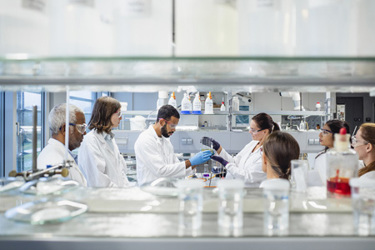What A Process Chemist Learned At CDMOs

By Louis Garguilo, Chief Editor, Outsourced Pharma

After a dozen years at Asymchem’s North Carolina location, and often traveling to that organization’s facilities in China; and prior to that serving customers at AMRI (now Curia) for just shy of seven years, Matthew Johnson decided it was time to bring his process development skills to a biotech.
We discussed his choice, Astex Pharmaceuticals, in an earlier editorial. Today it’s all about Johnson, and what he can tell us about his post-CDMO career now he’s been at Astex for a few years.
A Push Too Far

“I learned to look for how they operated internally, and if they understood our concerns as well."
“Sponsors need to make their business model work,” he says, and if that model calls for development and manufacturing outsourcing, they better be organized internally, and also have that understanding of external-partner needs."
Sponsors without it are often "pushing for as much as they can get out of you,” and that can wear down, if not grate on, a service provider.
On the other hand, knowing how to balance your approach as a sponsor can aid in the development of long-term relationships with your CDMO.
“It is important to find that balance, that proper limit,” Johnson says, "but I will admit here at Astex, we push our external partners quite hard!”
“We have high expectations,” he clarifies. “So I don't want to say that it's an easy balance to achieve, or its always an easy ride. However, from my perspective of having been on both sides, if you need to push your CDMO in a certain area – on timelines, for example – it has to be in the spirit of reciprocity.”
What’s an example of that?
Johnson recalls working with clients who were "consistently pushing, but then when there were things we needed, for example batch record reviews to help meet production timelines, it wasn’t a high priority for them. That would cause us headaches in managing our plant schedules.”
Such sponsor behavior can create the feeling of a lack of mutual respect. At the least, it’s indicative of poorly organized internal processes related to outsourcing. These sponsors ended up “effectively working against themselves, and causing their own complications.”
So Johnson learned to take the full measure of the clients he was serving. Now he brings that experience to Astex, an important part of which is what he deems "overall process knowledge."
“I had to work with professionals at sponsors who had little understanding of what the actual overall development process is, or what the CDMO working for them needed to accomplish their goals,” he says.
It's a kind of "real-life manufacturing knowledge,” he says. “How a plant operates as a continuous unit; how campaigns are run and progress through the stages; the details of how certain equipment operates, how various filters perform, or how samples need to be taken and when.”
If you are at a biotech without that knowledge or experience, Johnson is not suggesting you run out and hire someone like him away from a CDMO – although that does seem to happen a lot nowadays.
You should work hard to recognize your blind spots, and make the effort, as individuals and as an organization, to better understand your CDMO as they work you through the development process.
Listen to what they are telling you, and think deeply about why they are telling you that.
Today’s Challenges
Today, as Johnson searches for CDMOs to work with, a main challenge are those suppliers who advertise open capacity that in fact is not available.
Closer to the truth, he says, is nowadays you find you have to plan 18 months to two years out for manufacturing slots, or even early development projects.
“The flexibility to move around, to get a new campaign in early, can be a struggle,” he says. And clinical trials can be impacted, a new reality for Johnson.
This lack of authentic open capacity is a shock to him. During the years he spent at Asymchem – a large contract manufacturer with capacious plants in China – he rarely had to present a capacity challenge to his clients.
“Honestly, in all my 20 years in the CDMO area, that was one thing we never had – issues with capacity.”
He mentions two best practices to deal with today’s long lead times.
- Work diligently to create elongated planning that effectively ensures early on you’ll have sufficient inventory to continue to support clinical supplies.
- Consult with your CDMO to create solutions to work around timeline constraints. An example of this would be flexibility in batch size to utilize different equipment trains to meet a specific manufacturing goal.
China Perspective
Finally, we change subjects and Johnson goes back to his days working for a China-based CDMO.
He is worried today’s growing geopolitical challenges appear to be reducing to a degree "the China option" for some biotechs, and that’s a large chunk of CDMO capacity to downgrade.
“Astex works in all the geographical regions with the key players that best suit our business needs,” he says proudly.
“Clearly, it’s within the Western CDMOs we see a capacity crunch causing these long lead times. I still see a strong utility and benefit to China,” he says, and adds, “India as well.”
“The whole political situation for me is a minefield," Johnson concludes. "I understand taking a step back to further understand the effects Covid had on the industry. But having seen a lot of the landscape and quality in China … but put it this way:
"I still see the need for a global CDMO market. That's how this industry works most efficiently.”
